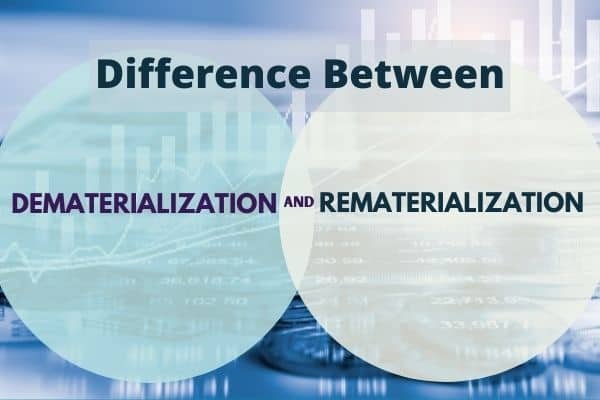Dematerialization or demat is the process of converting physical securities such as stocks, bonds, and mutual fund shares into electronic form. This is done by opening her Demat account with a Depositor Participant (DP). Once a security is dematerialized, it is held in electronic form in an investor’s dematerialized account.
Rematerialization is the reverse process of converting electronic securities back into physical form. This is done by submitting a Rematerialization Request Form (RRF) to the DP. The DP then sends the physical securities to the investor’s registered address.
Advantages of dematerialization
Dematerialization of physical securities has several advantages.
Convenience: Dematerialized securities are easier to manage than physical securities. Investors can buy and sell dematerialized securities online or through her DP’s mobile app with just a few clicks.
Security: Dematerialized securities are more secure than physical securities. These are stored in warehouse storage, which is a highly secure facility. Efficiency: Dematerialized securities can be transferred between Demat Accounts quickly and easily. This is in contrast to physical securities, which need to be physically transferred from one investor to another.
Transparency: Investors can track their dematerialized securities holdings online or through their DP’s mobile app. This helps investors to stay informed about their investments. Benefits of Rematerialization or Re Demat.
There are a few reasons why investors may choose to rematerialize their dematerialized securities:
To receive dividends in physical form: Some investors prefer to receive dividends in physical form. This can be done by rematerializing the shares before the dividend record date. To participate in corporate actions such as rights issues and bonus issues: In order to participate in corporate actions,
The investors may need to hold their securities in physical form. To pledge the securities as collateral for a loan: Some lenders may require investors to pledge their securities as collateral for a loan. This can be done by rematerializing the securities and pledging them with the lender. Check more on how to create demat account.
To dematerialize physical securities, investors need to follow the following steps:
Open a Demat Account with a DP. Submit the Dematerialization Request Form (DRF) to the DP. Attach physical securities to DRF. Submit DRF and physical securities to DP. The DP then dematerializes the physical securities and deposits them in the demat account of the investor.
How to rematerialize dematerialized securities
To rematerialize dematerialized securities, investors must follow the following steps:
Submit the Rematerialization Request Form (RRF) to the DP. The investor specifies the number of securities he wishes to reproduce and the registered address to which the physical securities will be sent. Pay the rematerialization fee. The DP then sends the physical securities to the investor’s registered address. Check more on how to create a demat account.
The closing thoughts
Dematerialization and rematerialization are two important processes used to manage securities in electronic form. Dematerialization has several benefits such as convenience, security, efficiency, and transparency. Rematerialization may be required for certain purposes, such as receiving dividends in physical form, participating in corporate actions, and pledging securities as collateral for a loan. Check more on how to create demat account.







